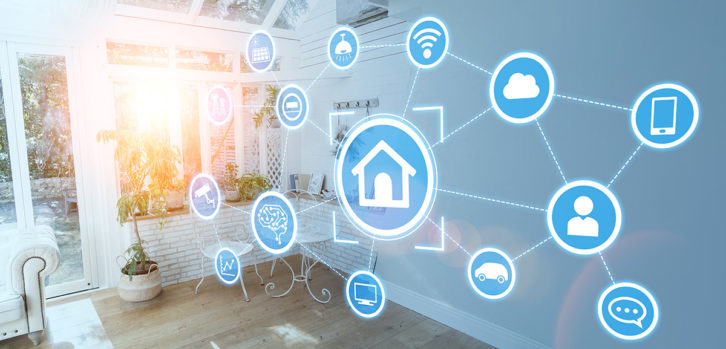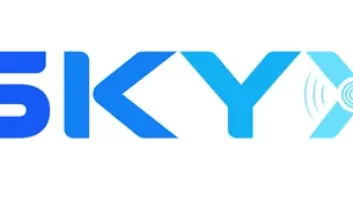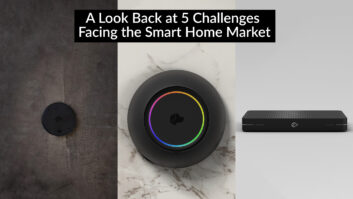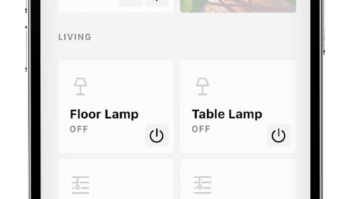The term “smart home” is important to our industry. The trouble is, while everyone pictures something when they hear the term “smart home,” they don’t all picture the same thing.
The term “smart” is diluted. Anything that can be operated via app or voice is marketed as smart — but most of these devices are implemented in an ad hoc manner that allows no real coordinated automation, insight, or management to occur. Custom integration professionals know how to create a true smart home that delivers insight, value, enjoyment, and peace of mind. In this interview with the members of CEDIA’s Tech Council and their senior director of strategic partnerships, we explore what customers expect from a smart home, and how integrators can not only deliver but expand their customers’ understanding of what’s possible.

What Does “Smart Home” Mean Today?
Before the dawn of the Internet of Things, people envisioned a “smart home” as a fully integrated experience, with mundane tasks automated for the convenience of the residents — and also as a dream of science fiction. Think the Jetsons’ apartment walking Astro the dog for them, or Epcot Center’s “Home of the Future.”
As “smart devices” arrive on the scene en masse, that coherent vision has fractured: Just throwing ingredients together doesn’t make a pie. “Most consumers think that with a few smart devices, they have a smart home,” says Ian Bryant, senior director of strategic partnerships for CEDIA. “A doorbell, controllable thermostat, a few lights, a voice assistant: that’s it.” It’s not exactly what Disney and Hanna-Barbera dreamed about, is it?
“Ask 100 customers what a smart home is, and you’ll get 101 different answers,” says Peter Aylett, CEDIA Tech Council member and partner at HTE Acoustic Interior Design. “Ask 100 integrators, and you’ll get the same.”
Discretion Is the Better Part of Value
Given our culture’s early lofty dreams and current ill-defined expectations, it’s no wonder that some have soured on the concept of the smart home. “My customers don’t ask for a smart home, or if they do, it’s with a wink,” says Rich Green, CEDIA Tech Council member and founder of Rich Green Design. “They just want network connectivity for remote monitoring and control.”
Integrators can play a crucial role in repairing the reputation of smart homes by helping their clients be realistic about what the system can and should achieve. “I believe most dissatisfaction with technology in the built environment arises from the user experience being over-promised and under-delivered,” says Aylett. “The system must work first time, every time. Most dissatisfaction occurs when frivolous functionality is prioritized over stability and reliability.”
Evolving the Understanding of “Smart”
Home technology systems can be very clever indeed. It’s not the system that’s really smart, though; it’s the human mind behind it. “We consistently hear that those who try to create a DIY smart home are not happy with the end result,” says Bryant. “That’s why we recommend using a professional integrator even if using direct-to-consumer products.”
“Our industry needs to change the perception that the most important things in a smart home are the products,” says Aylett. “Stuff is mostly stupid; it’s the people who design, configure, and maintain the system that put the smart into smart home.”
According to Green, the term “smart home” has its place, but it must contain multitudes. “’Smart home’ is a lot easier to market than ‘thoughtfully designed, professionally installed, network-connected, integrated electronic and software infrastructures that enable control and automation of technologies throughout the home.’ That’s the idea it should be shorthand for, though.”
Smart by Design
A smart home can’t be bought one device at a time; it has to be designed. “Design services are the custom integration industry’s biggest differentiator,” says Bryant. “The knowledge of the best products to use, how to integrate them into the home, and how to automate systems for maximum positive impact on the user is what sets a professionally installed system apart.”
Applying that experience to create a customized smart home is both art and science. “Design is the most important benefit we offer to a family building the home of their dreams,” says Green. “It’s hard work, it’s personal, and it requires a sense of humility and empathy to gain intimate information about a family’s true needs.”
As direct-to-consumer devices grow more sophisticated, that hard work will remain the lifeblood of the custom integration industry. “We are no longer in an era when channel-specific limited distribution equipment is necessary to deliver amazing and reliable user experiences,” says Aylett. “The differentiating factor is the human one. People choose a restaurant because of the chef, not the raw ingredients. When it comes to integrated technology in the built environment, we are the experienced and skilled chefs with the best recipes.”
“Consumers should know by now that creating a smart home isn’t easy,” adds Green. “It takes adult supervision. CEDIA’s members are the answer.”
You Think You’re So Smart
It’s a flattering idea for the custom integration industry: we’re the smart part of the smart home. Living up to that promise will require patience, empathy, courage, and education.
“All the big enabling technologies — AI, IA, Web 3.0, Skynet — will creep up on us over a period of years rather than arriving overnight,” says Aylett. “You can call a design a ‘smart home,’ an ‘integrated home,’ a ‘connected home’ — but the important thing is that you use terms that help the customer in front of you understand the value proposition. How will the system you’re proposing enhance their life?”
“The surge of moderately priced connected devices for the home has enabled more people than ever to get into the connected home market, which means there is more business for our channel than ever,” says Bryant. “It’s time to be bold. Expand your offerings to more than just AV, entertainment, and networking. Continue to expand your knowledge with industry education from associations like CEDIA and your manufacturing partners. Show your certifications with pride and explain their importance to your customers.”
“The most important thing CEDIA can do right now is empower the individuals within their membership,” says Green. “Training, certification, and grassroots tribal knowledge sharing can blossom into a thousand profitable companies.”
Now that sounds like a pretty smart idea.






